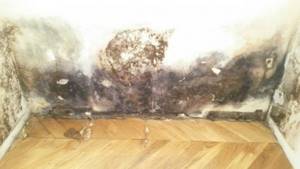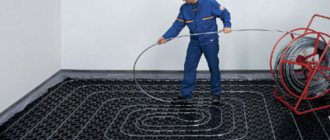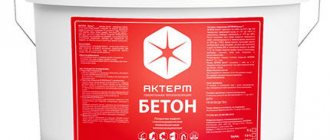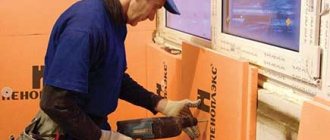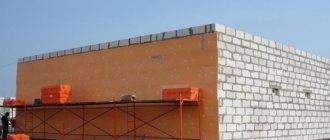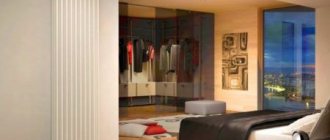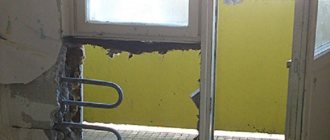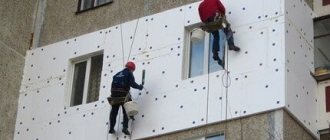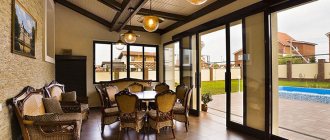There is a saying: any apartment is good if it is your own. You can decorate the interior to your liking, equip a gym in the bedroom, get a cat or a dog. Having your own apartment has a lot of advantages, with occasional problems.
A common problem is damp walls. Dampness appears in late autumn and winter, when there is a difference in temperature inside and outside the home. It affects corner apartments and those located on the upper/lower floors of the building.
Damp wall
Main types of fungi
Before deciding how to treat a wall against mold and mildew, you need to know what types of fungi there are. There are quite a few types of them. The most common among them are:
- moldy;
- blue fungi;
- decay fungi.
Mold fungi grow on absolutely any material. At the initial stage they look like small dots of different colors, and over time they grow to significant sizes. With prolonged exposure, building materials are destroyed, which can result in damage to the integrity of the entire structure.
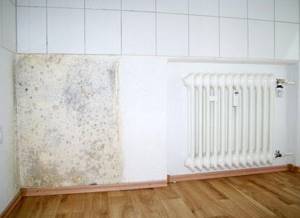
Blue fungi damage wood. In this case, the structure of the wooden house is painted in a gray-blue tint. This fungus not only spoils the appearance, it penetrates deep into the wood, which significantly increases its moisture level.
Only wood is susceptible to rot; other building materials are resistant to it. Rot can be completely different. When bacterial rot forms, wood is destroyed. The affected area becomes dark and the strength of the material is significantly reduced.
Is it necessary to treat walls against fungus before renovation?

The risk of infection is also high in rooms with unfavorable living conditions for microscopic aggressors. Dampness can form, for example, due to flooding by neighbors, leaking radiators, or careless watering of indoor plants. Thousands of pathogenic microorganisms enter apartments and houses every day - on the soles of shoes, with gusts of wind from windows and vents, on pets, so the risk of mycelium development is high. In the case when the vital processes of fungi occur under the wallpaper, the problem is not noticed for a long time, and when detected, it requires serious efforts to eliminate it.
Harm from fungi and mold to humans
It is very important to know how to treat a wall against mold and mildew, as they cause great harm to the body. They provoke the occurrence of such diseases:
- pneumonia;
- tuberculosis;
- asthma;
- bronchitis;
- laryngitis;
- allergy;
- eye diseases.
In addition, severe dizziness, runny nose, nosebleeds, and nausea may periodically occur. Black mold is especially dangerous because it can cause serious lung disease and even death.
How long will waterproofing last?
Everything wears out over time, including the waterproofing coating. The protective layer can slowly but surely deteriorate, losing effectiveness. One day the coating will need to be updated.
How durable is the protection of walls from moisture using various methods:
- Waterproofing films will last up to 50 years - however, if they do not break.
- Injection and penetrating waterproofing are among the most durable. They will faithfully protect your home for 20 years or more.
- Waterproofing with liquid rubber is reliable, but over time it can become weak.
- Mastic is not durable - after 5-10 years its layer will need to be renewed.
- Wooden wall treatments wear out the most. It is necessary to repeat every 3-5 years.
- Regularly refresh the hydrophobic coating of the facades of your house: it can also crumble over time.
Often, installing new waterproofing is problematic due to the finish. Many owners of private houses neglect major repairs: everything is still in order, the house is not falling down - why strip it and refinish it? You need to be careful here. When the house starts to crack, it will be too late to install waterproofing.
Causes of mold and mildew formation
It is very important to know how to treat walls against fungus and mold. But it is equally important to find out why they appear on the walls. If the cause is not eliminated, the fight against fungus and mold will be useless. High humidity promotes the appearance of these microorganisms in the home. Initially, mold forms in building partitions, and then spreads to all walls of the apartment. If mistakes were made during construction, the dew point is broken, or there are microcracks in the building structures, then the likelihood of fungus occurring is very high.
Poor ventilation increases the risk of mold, which is greatly facilitated by plastic windows. They are characterized by a high degree of density. By blocking the flow of fresh air, such modern windows provide a comfortable microclimate for the development of fungus. To avoid this, ventilation in rooms with Euro-windows must be ideal.
Wood suffers most from mold, since it is a natural material, but the fungus can spread to concrete and brick.
Why are there problems when dealing with mold?

The main reason for failures in the fight against mold is the elimination of the consequences, the visible result, and not the cause of its appearance. And the reason is simple - dampness, which mold fungi love very much. This is what needs to be combated first of all with the help of a number of measures. If the air humidity in the room is 95% or more, and the temperature is +20°C, then the likelihood of mold appearing and spreading is very high.
Such a high level of humidity can occur in a living space in the following cases:
- there are plastic windows that are rarely set for “ventilation” and there is no air conditioning;
- a large accumulation of indoor plants in one place;
- frequent washing and drying of clothes indoors;
- cool indoor air with high humidity outside;
- there are roof leaks;
- problems with the water supply system, pipe failures;
- problems with the central heating system and plumbing networks;
- damage to the wall through which moisture enters from the outside, for example, during rain;
- improperly performed insulation of external walls.
Features of mold removal
First of all, you need to determine the cause of the fungi, as this will allow you to understand how to treat the wall against mold and mildew in order to achieve the most positive result. Despite the fact that the processing process is quite simple, it is divided into several stages:
- cleaning walls from mold, removing the top layer of the contaminated surface;
- drying the affected area of the wall;
- checking the integrity of thermal and waterproofing;
- surface treatment with special antiseptic preparations.
When carrying out all the required work to remove mold and mildew, special attention should be paid to factors that can have a significant impact on the speed of their spread.
Where is waterproofing needed?
If the interior walls of the apartment are not protected, then some surfaces in the houses must be covered with waterproofing materials.
Mandatory processing:
- External walls. Everything is very simple here. Due to regular exposure to moisture, walls begin to lose their strength. An environment for fungi and insects is formed. Over time, unprotected walls will begin to rot. The moisture with which the material is saturated will sink down and gradually destroy the foundation.
- Basement. The basement walls suffer the most. The load on them is colossal: the weight of the house itself, wet soils, the proximity of groundwater, seasonal heaving of the soil. Any basement definitely needs protection and strengthening.
Under no circumstances should you insulate a basement without first installing waterproofing. And both internal and external!
- Places of high humidity. Here you need to waterproof the walls from the inside. The bathroom and kitchen are the wettest places in the house. The bathroom is a favorite place for fungus. You can get rid of dark spots on the seams between tiles. But what if the fungus is already deep in the wall? Wet and always warm kitchen walls are an excellent haven for cockroaches.
In damp areas of the house, it is appropriate to use materials that provide vapor barrier.
Treatment before wallpapering
It is important to know how to treat a wall against mold and mildew before wallpapering, since dark spots look very unsightly on the surface of the walls, reduce the service life of the wallpaper and negatively affect your health. According to many experts, for the rapid development of fungi and mold in the room there must be constant dampness or a lack of fresh air. In such conditions, fungal and mold microorganisms multiply very quickly and colonize new surfaces.
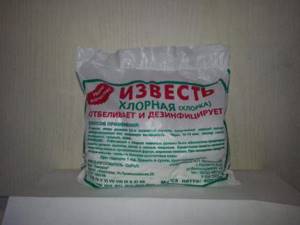
Before gluing wallpaper, you need to treat the surface with a spatula, removing the infected layer, preventing the subsequent spread of the fungus. Then you need to treat the surface with a soap solution, but if mold has been parasitizing on the walls for a long time, then this product will not help. In this case, you need to remove the layer of damaged plaster and apply a new one. Then you need to apply a special antiseptic to the surface. It is advisable to apply the solution several times to the wall. The interval between processing and wallpapering should be at least 6 hours.
Why does mold appear on walls?
- Moisture seeps in from the street through damage to the wall.
- Moist warm air indoors comes into contact with cold walls and moisture (condensation) forms on their surface.
- A communication problem that was not detected in time.
Until you know exactly the cause of mold, do not purchase any means to combat it, since each case requires a separate solution.
For example, external moisture. If mold appears on the walls, you need to not only remove the mold itself, but also part of the plaster. If the wall is damp inside, it means that moisture is coming from the street through cracks and treating the wall indoors with solutions and compounds will not help. To solve this problem, you can use different methods, the choice of which depends on financial capabilities and the specific situation. One of the most effective and at the same time affordable methods is to use an additional layer of plaster on the outside of the building. You should know that ordinary sand-cement plasters have low vapor permeability, so condensation forms between the coating and the wall. Consequently, the surface of the main structure will be wet all the time. The result of this is constant freezing and thawing of condensate, and, of course, the formation of mold. It will not take much time for the plaster, under such conditions, to simply fall off the wall.
Treatment before plastering
Many people are interested in how to treat walls against mold and mildew when the walls are damp, especially if stains have already appeared on plastered surfaces. At the preparatory stage, the affected surface is cleaned with sandpaper or a spatula. After this, the affected area must be coated with a fungicide, as this product quickly and effectively kills mold and fungi.

There are also proven folk remedies designed to combat dangerous microorganisms. One of these methods is the treatment of the affected surface with chlorine-containing agents. It is worth remembering that when working with such substances you need to be careful and use protective equipment. To consolidate the result obtained, you need to carefully coat the wall with a primer, to which a small amount of antiseptic is added.
The better to fight
The drugs that are used today to eliminate this problem belong to the group of antiseptics. Chemical compounds are sold at garden or hardware stores. There are folk remedies. Each composition has its own advantages and disadvantages. Knowledge about them helps you choose the most effective way to deal with unsightly black spots.
Folk remedies are good because they are prepared from ingredients that are always on hand in the house. These are vinegar, alcohol, potassium permanganate, bleach, hydrogen peroxide, and any other substances that have antiseptic properties. Each of them can be used to make a fairly effective remedy. To do this, you need to dissolve one hundred grams of the component in a liter of water. Then take a sponge, soak it generously in the solution, and rinse the affected surface with it. Pour the remaining solution into a spray bottle and spray over the newly washed area.
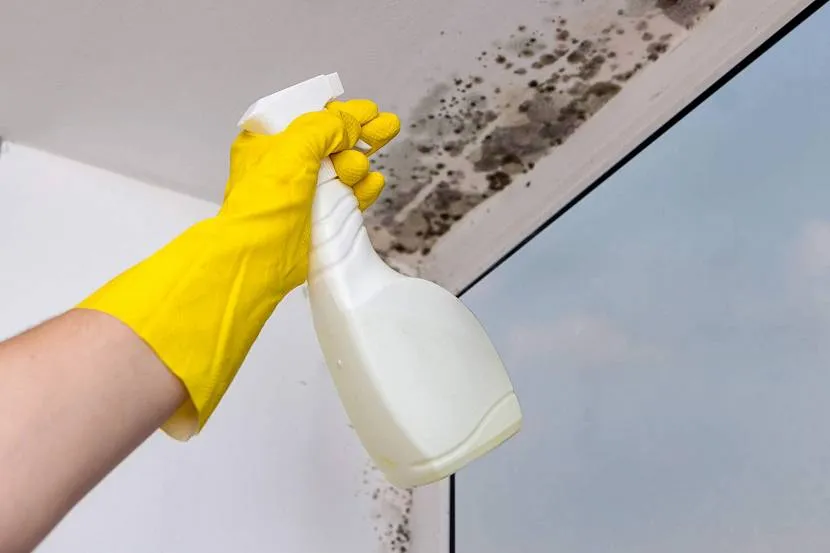
The easiest way is to spray vinegar on the mold Source www.thegazette.com
Vinegar 70% should be used in its pure, undiluted form. The product is simply poured into the spray bottle and applied for an hour, and then washed off with a sponge and clean water.
Bleaching can be used to treat the affected tree. There is no need to wash it off afterwards. When choosing it, it is important to remember that the product has a fairly aggressive formula that can split the material and whiten its front surface. Therefore, before use, experts advise conducting a test test on some invisible area.
Borax is most suitable for treating concrete surfaces. It is diluted with water in proportions of 1x3, then the affected area is soaked with the prepared solution. If the fungus has managed to penetrate deep into the concrete structure, you will have to repeat several of these procedures.
In especially severe cases, it is allowed to mix several components at once and prepare an antifungal solution yourself. To do this, you need to mix fifty grams of bleach, three large spoons of sodium phosphate and four liters of water.
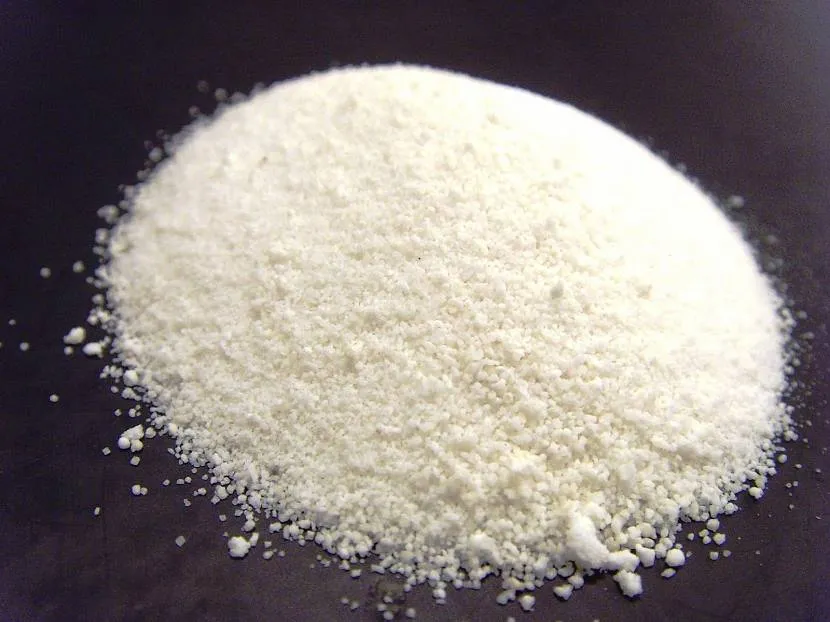
Technical borax to combat black fungus Source alfalme.com
See also: Catalog of companies that specialize in working with paints and protective materials
Any folk remedy for mold and mildew is effective only if the lesion has not yet spread, if it occupies a small area and covers only the top layer of plaster or wallpaper. When the problem becomes large-scale, you need to make a choice in favor of complex chemical compositions.
Specialized means
In stores you can find a whole class of antiseptics that can successfully fight any type of mold fungi. They are more expensive than vinegar or peroxide, but they have more benefits. Each has its own specific application.
For example, “Biotol-spray” is often used where there is a constant high humidity threshold. It is ideal for preventative treatment of laundries, bathrooms, and indoor swimming pools. It is used by public utilities services to treat street objects (fences, monuments). A drug called “Olympus Stop Mold” is slightly inferior to this product in terms of power. This is the best preparation for mold on the walls of basements, cellars, and other rooms where it is damp and there is no daylight. Preventive treatment helps prevent damage. They can also carry out “treatment” of a process that has been developing for years.
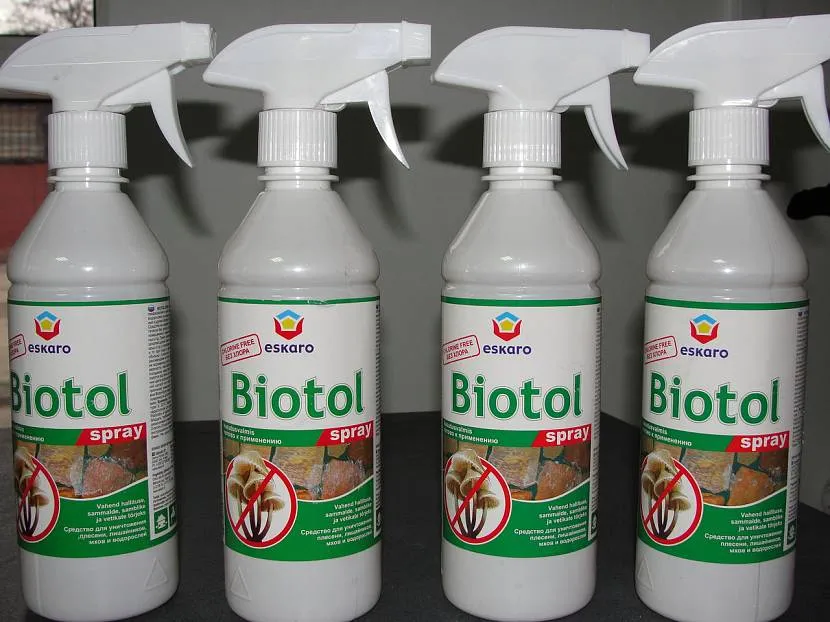
“Biotol-spray” is an effective chemical for combating fungal infection of walls Source i.simpalsmedia.com
The drug “Fongifluid Alpa” was developed specifically to combat black mold. This is a new generation fungicide. When the mold has been successfully eliminated, the walls need to be treated for some time to prevent reoccurrence. To do this, it is better to use the liquid Dali product.
Treatment before painting
How and with what should I treat the wall against mold and mildew before painting? This question worries many people, especially those who have high humidity in their apartment or house. If fungus or mold has formed, then these microorganisms must be carefully removed with a spatula along with a layer of plaster. At the same time, the wall surface is cleaned from dust and dirt, and remnants of the old coating.
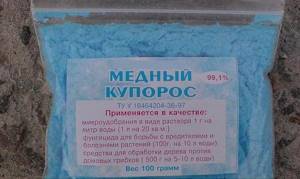
Surfaces affected by mold and mildew should be thoroughly treated with an antiseptic several times, and the walls should be coated with a primer, as this will ensure better adhesion of the paint. The base is then leveled using putty, and a layer of plaster is applied to severely damaged areas. After leveling the surface of the wall, it is covered with paint.
How to REMOVE mold in an apartment or house yourself? - Procedure
Many methods have been invented to combat mold on walls or ceilings. These include traditional methods using improvised means, and the use of special chemical solutions. But in any case, the work order should include the following steps:
- Wetting with water . The area affected by mold must first be moistened with water. This measure will “block” the spores from flying into the air during further work.
- Preparing the wall . In case of severe damage, the plaque is first thoroughly cleaned off. If the wallpaper, layer of plaster or areas with paint are damaged, you need to carefully remove them with a spatula. Then the fungus is removed from the walls. To do this you will need: a scraper, a wire brush or a drill with a wire brush. In areas affected by mold, not only paint, wallpaper, but also plaster are completely removed. Wooden and concrete surfaces are cleaned using milling. Sometimes the situation is so advanced that the fungus penetrates into the deepest layers of the wall. There, in a porous structure, the main part of the mycelium is formed. If you cannot get to it, but only clean off the upper part, then the re-development of the mycelium is inevitable. The solution is to remove the affected fragment completely and replace it with a new one.
- Read the instructions . It is important to adhere to the proportions in the finished preparations and strictly follow the recipes of folk remedies. Insufficient concentration will not bring the desired effect. An excessive amount can damage the walls or cause illness to the occupants of the room.
- Application of an antifungal agent . The product destroys spores and the fungus itself. In addition, it prevents the fungal infection from spreading further. It is necessary to distribute the drug, going 1 m beyond the affected part. The fact is that around the infected area there are tiny myceliums invisible to the eye. If they are not removed, the walls may become infected again.
- Layering the drug . One layer is not enough to destroy microfungi. The area with mold must be treated with the solution 2-3 times. In this case, the layers cannot be applied to each other in one go. You must wait until the first layer is completely dry, then apply the second.
- Removing the solution . If the instructions require this, the solution is washed out with water. It is important to allow the moisture to dry before proceeding with further finishing work. Sometimes it is necessary to remove the remaining dirt using a dry method - using a brush.
- Destruction of infected fragments . All removed parts must be destroyed. Paper, wood, and remaining paint are burned so that they do not become a source of new mold damage.
- Applying a protective solution . After clearing the affected areas of mycelium, it is necessary to apply a special protective solution. It serves as a preventive measure against re-infection of the surface.
After the work has been carried out, it is important to ensure conditions in the apartment or house that will create a healthy microclimate and prevent the appearance of mold. What should be done:
- Throw away any items that have been damaged by fungus. Often, fungus settles not only on walls, but also on textiles: curtains, furniture upholstery, carpets. You need to get rid of all this so as not to provoke further mold development.
- Create a good indoor microclimate. It is necessary to create good ventilation, normal air temperature, and also eliminate all sources of high humidity.
Precautionary measures
Work to remove fungus in the home involves chemicals. To ensure safety when working with them, precautions must be taken.
- Work in a protective mask and gloves. Fumes from anti-mold chemicals can harm the respiratory system. Therefore, it is important to wear a mask while cleaning surfaces. It will also help prevent you from inhaling fungal spores, which will be removed from the walls. In addition, hand protection must be provided. To avoid skin contact with chemicals, be sure to wear gloves.
- Ventilate the room. As mold areas are removed, an increased concentration of spores will appear in the air. To prevent them from settling on the surfaces of the room and getting into the respiratory tract, you need to ensure good ventilation in the house.
- Do not use the premises for 48-72 hours.
After the work has been carried out, a person should not stay in the treated room for 2-3 days. The air is filled with flying spores and fumes from chemicals. Only 48-72 hours after treatment can you use the room. All this time it should be well ventilated.
Treatment in the bathroom before laying tiles
When carrying out renovation work, it is important to know how to treat the wall against mold and mildew before laying the tiles, as well as to identify the affected areas. After this, the dark spots are carefully cleaned off with a spatula and protected with sandpaper. At the final stage, antifungal and antimicrobial agents are applied to the wall surface. A better result can be achieved after treatment with an antiseptic, which is added to the primer.
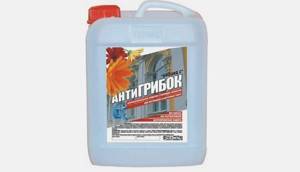
Knowing how to treat the wall against mold and mildew in the bathroom, you can get rid of unpleasant phenomena forever.
Types of waterproofing
Let's consider the types of waterproofing that are currently used in construction.
Injection waterproofing
Complex, but effective. The wall is impregnated with a hydrophobic substance throughout its entire thickness, closing the slightest pores. To do this, passages are drilled along the entire wall, where the substance is injected through a pump. They perforate the walls from the inside - but as a result, the protection is double-sided, which is very convenient.
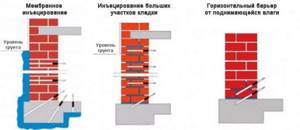
Where is it used? This type is popular when working with brick and concrete walls. It is the best option for a country house. Injection waterproofing is also used for the basement: to protect the walls on all sides, there is no need to dig up the house from the outside.
Pros:
- materials for injection waterproofing are environmentally friendly;
- monolithic protective layer without joints;
- uniform and reliable insulation throughout the entire thickness of the wall.
Minuses:
- price;
- difficult technology.
Materials. Injection waterproofing is made with acrylate and hydroactive gels, epoxy polymers, cement-sand compositions, and silicate-based products.
Penetrating waterproofing
The process is simple: covering the wall with mortar. And he himself will do everything “for you.” The distinctive feature of this method is indicated by the name itself: protective substances penetrate tens of centimeters into the wall, creating a thick and strong protective layer.
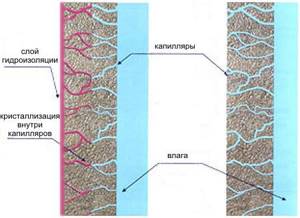
Where is it used? This is an option for concrete, reinforced concrete and brick. This method does not work with foam concrete. The main area of use is vertical waterproofing of walls.
Penetrating agents are not suitable for walls with significant voids or cracks.
Pros:
- non-toxic;
- durability;
- effective protection against aggressive environments.
Minuses:
- high price of materials;
- does not protect against pressure leaks.
Coating waterproofing
Involves covering surfaces with mastics. The mastic forms a strong waterproof film that tightly closes the smallest pores.
You don’t need any special skills to apply the mastic - you will need a regular roller for this. However, you should “spread” the material carefully and without gaps. Be sure to take breaks between approaches: do not take on a new layer until the previous one has dried.
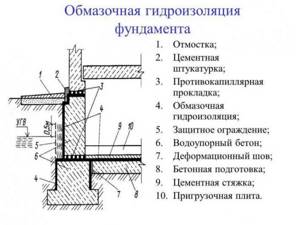
Where is it used? This method is often used in the finishing of reinforced concrete, concrete, and metal structures. Widely used in waterproofing non-residential premises.
Pros:
- ease of operation;
- low price.
Minuses:
- wears out quickly;
- spoils due to sudden changes in temperature.
Might be interesting
Waterproofing
Foundation waterproofing: optimal choice of technology
Waterproofing
Clean water is the key to health, waterproofing concrete…
Waterproofing
Instructions for waterproofing a swimming pool
Waterproofing
Selection of materials, methods of waterproofing work...
Materials. “Coating” is done with various types of mastic: bitumen, polymer rubber.
Sprayed waterproofing
This is the application of liquid rubber by spraying. The desired surface is cleaned, primed and covered with material. The rubber layer provides 100% protection from moisture.
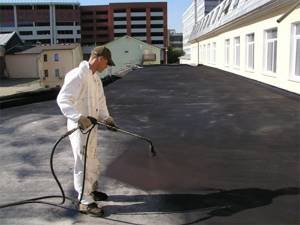
Where is it used? Rubber walls are not for residential premises. Sprayed moisture protection is most often used in basements and roofs.
Liquid rubber is the only “save” for basements in places with high groundwater levels.
Pros:
- strong rubber adhesion to almost any material;
- absolute waterproofness;
- speed of work.
Minuses:
- high price;
- the need for special tools for coating;
- the material does not allow air to pass through at all.
Today, spraying liquid rubber is completely fireproof.
Pasted waterproofing
Its essence is to cover the wall with bitumen material: panels, sheets or rolls. The task is to eliminate all the unevenness of the wall, prepare the surface and attach the insulator. The glue is often mastic.
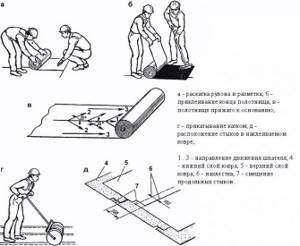
Where is it used? The classic use of this method is to insulate foundations and basements. Often, bitumen sheets - for example, roofing felt - are used to cover the roof.
Pros:
- quick covering of even the largest surfaces;
- ease of use;
- strength - materials can withstand heavy loads;
- high degree of vapor barrier;
Minuses:
- not suitable for hard-to-reach places;
- waterproofing cannot be done in winter;
- Can not be repaired.
Materials: bitumen cardboard, varieties of hydrosol, bitumen-polymer products: isoelast, technoelast.
When using adhesive waterproofing, an overlap must be observed - at least 10-15 cm.
Film waterproofing
Everything is simple here: wrap it with film - no water will get in. Waterproofing the walls of residential premises is not done with film - it does not allow air to pass through at all. This material is used to protect roofs, foundations, and floors.
If you insulate the foundation with film, you definitely need a geotextile backing. As with the previous method, overlap is required. The seams should be carefully secured with tape.
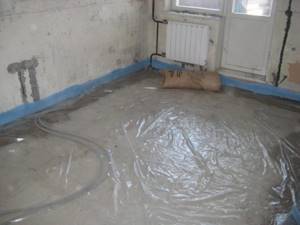
Don't expect cheap film to last long. Of course, the material does not allow water to pass through. There is another disadvantage - it breaks easily. Cheap polyethylene can be laid in two or three layers - but sometimes this does not help. High-quality waterproofing film is expensive.
A progressive method of film waterproofing is the use of a membrane. This is a polymer material that does not allow moisture to pass through, but can also breathe. At the same time, the membrane provides an effective vapor barrier.
Pros:
- efficiency;
- durability;
- ease of installation;
Minuses:
- breaks;
- requires additional training;
- high price of good film;
- additional costs for the substrate.
Painting waterproofing
This is basically protecting the walls from the inside. It’s easy to do: paint the desired surfaces with special waterproof paint.
Where is it used? This type of waterproofing is used more often indoors, but is sometimes used outside, to seal seams and cracks.

Pros:
- quick and easy application;
- vapor permeability;
- has anti-corrosion properties;
- abrasion resistance.
Minuses:
- short-lived.
Special means
Now there are many antifungal agents, so before deciding how to treat the wall against mold and mildew on the balcony and indoors, it is important to read the instructions, which give the characteristics of the product, its consumption per m2 and the features of treating surfaces with it.
Antiseptic agents with antimicrobial and antifungal effects are considered the most effective. Turpentine, water or white alcohol can be used as solvents. Oil-based antiseptics are quite common. Among the most popular used for wall treatment are the following:
- "Xiolate";
- "ArmMix Universal";
- "Teflex";
- "Antisept."
The drug "Xiolat" is considered a very good remedy. Its action is aimed at destroying not only the surface structure of mold, but also penetrates deep into the building material. Teflex helps eliminate mold and mildew. It is characterized by environmental friendliness, which makes it completely safe for humans and animals. Antiseptic primer "ArmMix Universal" penetrates deeply into the layers of building material, and does not cause any harm to health, even for allergy sufferers. When treating walls with the antiseptic agent “Antisept,” the color of the wall surface is restored, the base of cement and gypsum plaster, paint, and tile adhesive is strengthened.
If the surface of the walls is heavily damaged by mold, the room is completely disinfected by using a sprayed disinfectant. This product penetrates into microcracks, completely eliminating fungi and mold even under wallpaper.
How to REMOVE mold from the walls in an apartment at home? — 5 special means
Don't know how to remove mold? There are many different ready-made store-bought products for combating household mold on walls. They can be universal and suitable for removing all types of fungus. There are means to destroy a specific type of fungus. But in this case, you need to contact a specialist who can accurately determine what type of rot has affected the wall.
TOP 5 best store-bought mold remedies:
No. 1. Savo
Czech drug based on sodium hypochlorite. The product is packaged in a convenient spray bottle. Due to this, it is quite easy to process uneven surfaces, regardless of the type of wall covering. The formula is designed to fight fungus even in the dampest rooms: saunas, bathrooms, attics, basements. The main advantage of the drug is the complete destruction of mold. In addition, it provides long-term prevention against fungal infection.
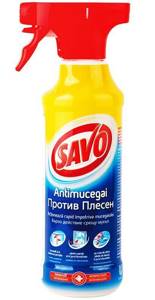
Savo drug
Instructions: preliminary cleaning of contaminated surfaces is not required. The drug is sprayed at a distance of no more than 10 cm from the walls. It is important to pay attention to cracks, thresholds, bends, bulges, and pits. The solution is left on the walls for 20-30 minutes. After this, it is washed off with water. If necessary, you can repeat the treatment when the walls are completely dry. According to customer reviews, it is enough to treat the surface with this product 2 times to get rid of mold in the apartment forever.
No. 2. Dali
Domestic product. A universal product designed to fight against fungus, mold and moss. You can treat surfaces made of concrete, plasterboard, brick, and wood with this product. Can be applied to both internal and external walls. The drug does not contain chlorine, which is important for allergy sufferers and people with upper respiratory tract problems. The product penetrates well into the surface to be treated, is quickly absorbed and does not spoil the quality of the material to which it is applied.
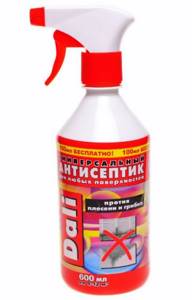
Drug Dali
Instructions: Apply to a dry surface with a roller, brush or spray. In case of severe mold damage, it is necessary to first mechanically clean the surface. Then rinse with water and dry the treated area. After this, you can begin processing. The air temperature in the room should not be lower than +5°C. After 24-48 hours, remove dirt with a brush.
No. 3. Fongifluid Alpa
The most convenient drug to use. Sold ready-made, packaged in easy-to-use packaging with a spray bottle. Does not require preliminary preparation. It is used for different types of surfaces: concrete, plasterboard, plaster, wood, stone, tiles, brick, finishing materials. The product carefully cleans the surface, does not leave streaks, and does not change the properties of the coating or the color of the paint. Consumption of the drug is 1 liter per 5 m2. It can be used not only to combat fungus, but also to prevent its occurrence.
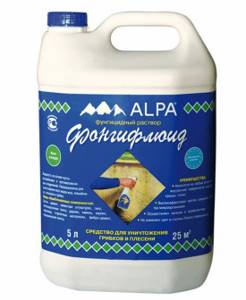
Fongifluid Alpa
Instructions: It is recommended to first clean the walls and remove all loose particles. Then apply the solution and leave it for 4-6 days, then clean off the dirt with a brush. If the lesion is severe, the procedure can be repeated.
No. 4. AMSS
The drug is produced in Germany. It can be used in the bathroom, on the balcony, in the kitchen, on the external facade of the building. It differs in that it does not change the properties of the surface on which it is applied. Due to this, they can even process decorative items. There is no chlorine in the composition, but despite this, the product copes well with even the most advanced situations. It can be used as a preventive measure against household mold and mildew during construction and finishing work.

AMSS drug
Instructions: spray the solution at a distance of 20 cm from the wall. Carry out the procedure until the wall is well saturated with the preparation. Leave for 3 days, re-process if necessary. The remaining solution can be washed off with water.
No. 5. Stop mold from Olympus
The drug contains no harmful volatile substances. It does not contain chlorine and is safe for people and pets. Designed for use in rooms with high humidity levels. It removes mold well from concrete, stone, tiles, plaster, wood, brick. It is used for treating bathrooms, cellars, roofs, and house facades. Provides long-term prevention against the appearance of rot, lichens, fungus and moss.
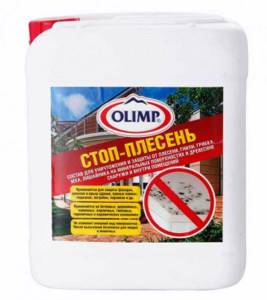
Stop mold from Olympus
Instructions: the surface is thoroughly cleaned of dust, mildew, mold and other contaminants. Peeling, receding parts of the coating must be removed. Apply the solution to a dry, clean surface using a roller or soft brush. When using a sprayer, apply to the wall at a distance of 20-30 cm. The surface will dry in 24 hours, provided that the air temperature is +20°C. After this, you can begin finishing the walls.
Folk remedies for eliminating mold and fungi
Many people are interested in how to treat a wall against mold and mildew with folk remedies, since many of the chemicals used can be very dangerous to human health. Among the most popular folk remedies, the following should be highlighted:
- bleaching powder;
- hydrogen peroxide;
- copper sulfate solution.
A solution of bleach is considered a good solution. To do this, you need to dilute 200 g of lime in 1 liter of water. In addition, it is advisable to additionally use fungicides included in adhesive compositions.
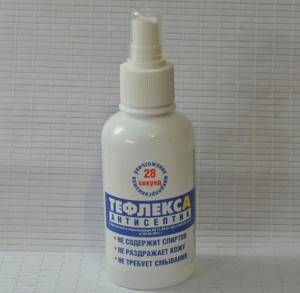
If the mold has spread to the plaster layer, then hydrogen peroxide must be used for treatment. Copper sulfate is also considered a good remedy used to eliminate mold and fungi. To prepare the liquid, you need to dissolve 100 g of vitriol in 10 liters of water. The solution must be applied to the surface of the walls using a brush or spray.
Remedies (modern and folk) designed to remove fungus from walls
- One of the leaders of products whose action is directed against mold on walls is an antiseptic primer. It not only rids the house of mold, but also prevents its reappearance. It is also easy to use, it usually does not need to be diluted with water, and the instructions detail how to apply the primer. The basic rule is this: first you need to completely clean the surface of the wall from fungus (it’s good to use a scraper or spatula for this purpose), then apply an antiseptic primer to the dried surface with a brush. After it has dried, you can complete the work by covering the wall with wallpaper or paint.
- Regular bleach (sodium hypochlorite), which can destroy mold along with spores, works well against mold on the wall. It works well to remove mold on bathroom walls and walls in rooms that you don’t mind accidentally discoloring. However, the drug is not at all safe, so when using it, you should think about protecting the skin of your hands and body, and also take care to ventilate the room. Usually a solution is made (1:10).

- Treat areas damaged by mold with vinegar using a spray bottle or a damp cloth, after which, after an hour, wash off and ventilate the room. To consolidate the result, repeat the procedure every week, spraying a small amount of vinegar. Its action against fungus is due to the fact that it is an acid, and therefore it is able to eliminate mold without harming human health, since it is completely non-toxic.
- Hydrogen peroxide is also an excellent remedy (antibacterial and antifungal) that helps get rid of mold: a 3% solution of the drug not only destroys many types of mold, but also whitens the surface of the wall (do not use on walls covered with paint).
- If the fungus has affected walls made of non-porous materials (for example, tiles), then ammonia can help you get rid of the scourge. A solution of ammonia (1:1 ratio with water) is applied to the affected area using a spray bottle and washed off after a few hours. The main disadvantage of the method is the strong smell, in some cases causing a headache or sore throat. Use a respirator.
- Ordinary soda is also popular as a remedy against fungus, having a reputation as a completely safe household cleaner. Therefore, when using it as an antifungal agent, you don’t have to worry about any harm to your health. The solution is prepared as follows: 1 tsp. soda for 1 tbsp. water. It is poured into a spray bottle and sprayed onto areas of the walls affected by mold. To achieve the best results, there is no need to rinse off the baking soda.
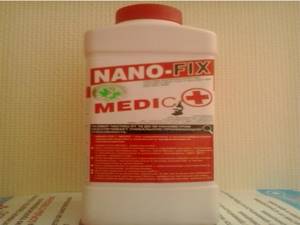
- Fungicidal solution is a proven product that effectively combats the problem of fungus on walls. They need to treat the surface that has been cleared of mold, and then, after 5-6 hours, repeat the procedure. To obtain the best result, it is recommended to treat the walls in this way 4-5 times, after which an antiseptic primer should be applied.
- Borax, which is completely safe for human health and is also a toxin for mold, can also cope with fungus. It is necessary to apply a borax solution (1 tbsp per 2.5 liters of water) directly to the mold using a coarse brush, while mechanically removing the mold from the wall. Treat the wall with the solution repeatedly, without rinsing off the product with water, for the purpose of prevention.
- Tea tree essential oil is a popular folk remedy for ridding your home of fungus due to its natural antifungal and antibacterial effect. Despite the high price, you only need a little bit of it (1 teaspoon per 1 cup of water). The product is completely simple to use; you just need to apply it to the mold-damaged area of the wall using a sponge or spray bottle, and you don’t need to rinse anything off. If the solution remains, it can be safely used after a while, since tea tree oil does not lose its properties.
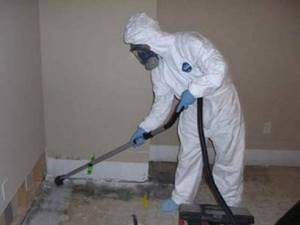
- Grapefruit seed extract, a natural antiseptic, can also combat fungus. It is used at the rate of 10 drops per 1 tbsp. water. We treat the wall with mold in the same way as when using tea tree oil, do not wash off the solution for the best effect. The advantage of the product is that it is odorless, while it perfectly disinfects and deodorizes surfaces.
- A solution of potassium permanganate (1 teaspoon per 1 liter of water) can also help fight fungus on the walls. It is as easy to use as other folk remedies: you just need to apply the solution to the area of the damaged wall using a sponge or spray bottle, without rinsing it off.
- A solution of water with a mixture of peroxide, vinegar and Boric acid (ratio 4:2:2:1) can give an excellent effect, easily cleaning your walls from annoying fungus. This is a simple, yet very effective product that is very easy to use: it can either be sprayed or applied with a rag to the wall affected by mold.
How to get rid of mold and mildew forever?
Having found out the reason for the formation of mold in the apartment, you can choose an antimicrobial agent. Before treating walls against fungus, you need to carefully check the adhesion of the plaster to the base. A dull sound may indicate that there is a cavity under the plaster, which leads to the spread of mold. All plaster must be removed from this area and the putty must be reapplied.
Then you need to apply an antiseptic composition to the treated surface using a sprayer, brush, or roller. The product is evenly distributed throughout the infected area.
What could be the sources of excessive humidity?
- The current popularity of double-glazed windows is explained by the fact that they are super-tight, and therefore help retain heat in the apartment. However, at the same time, there are also negative consequences of their use: they do not provide good ventilation in the room and contribute to increased humidity.
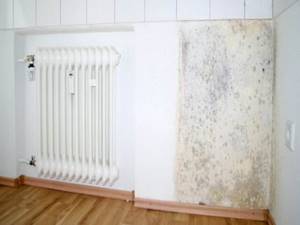
- The walls of a house with poor thermal insulation or in the construction of which mistakes were made (for example, poor adhesion of plaster and wall) sometimes tend to freeze, which also provokes excessive humidity in the room itself. With this problem, black mold usually forms with pockets in corners and at joints.
- Soil dampness. Problems with horizontal insulation can cause fungus to appear at the bottom of the wall, for example at the joints with the floor.
- Problems with leaking pipes and roofs. This is the most serious and dangerous sign, because in such conditions black mold appears and grows very quickly.
- Poor heating. This is typical mainly for country houses that are empty in winter and therefore unheated. The house becomes damp, which favors the appearance of fungus.
- Drying clothes in the room.
Prevention of fungi and mold formation
Most often, fungus forms in rooms with poor ventilation. In the bathroom, a favorite place for mold and mildew is in the seams between the tiles. You need to fight fungus on the walls in the bathroom by stabilizing humidity and temperature, which does not require tightly closing the door. If ventilation is not good enough, you need to install an additional fan.
The cause of mold formation can be cold and drafts. In this case, it is worth carrying out external insulation. To remove fungus and mold, you need to perform antiseptic treatment and subsequent waterproofing.
Causes of the problem
Before removing mold from a wall or ceiling, you need to find out where it came from and why it appeared. There are several factors that can be attributed to the problem:
- The first is humidity . The fungus likes to appear where condensation constantly accumulates. Its formation can be triggered by poor insulation, the presence of cold bridges, or damage to the water supply or sewerage system.
- The second is the lack of natural ventilation in an apartment or house. When plastic windows appeared on the market, the number of homes affected by fungus became much larger. They contributed to the formation of a closed space in which there was no ventilation at all. Modern models of plastic windows do not have this drawback. They have special valves installed that allow fresh air into the house.
- Damp basements are another source of mold . If they are not ventilated regularly, fungus quickly appears on the walls. The absence of light stimulates the described processes, so the problem begins to develop precisely from these places. In a private home, the source of mold can be an improperly insulated roof.

Condensation is the main reason for the appearance of fungus Source st03.kakprosto.ru
- Freezing of walls . It happens when the home is not heated in winter, or is heated poorly. Indoors, frost or even ice quickly appears on steep surfaces in the corners of rooms. When it melts naturally, it reveals a black surface underneath. It makes no sense to remove mold from mills without repairing the heating.
Another source of the problem is the flood. If the neighbors above constantly flood the lower apartments, fungus will definitely settle there. When isolated cases occur, it’s not scary; most likely, eliminating the causes of leaks will prevent dangerous damage. Systematic flooding will create favorable conditions for the reproduction and development of the fungus. This needs to be taken into account.
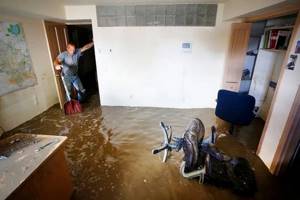
A systematic flood of neighbors can provoke the appearance of a fungal infection Source www.permexpertiza.ru
Will baking soda help?
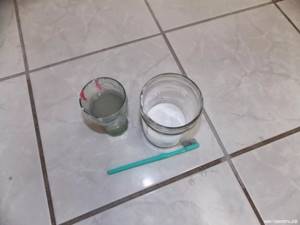
- non-toxic;
- there is no noticeable odor;
- completely safe for humans.
What should be done
- A tablespoon of soda is diluted in 3 liters of warm water;
- wash the walls with the resulting liquid;
- The final touch is to wash the walls with clean water.

One of the safest and fastest ways to get rid of fungus in an apartment. It is actively used in everyday life, so we can confidently answer the question in the subtitle: yes, it will help!
We use borax to eliminate

- fast and safe;
- no final cleaning of the wall is required.

What do we have to do
- dissolve 100 grams of borax in 1 liter of water;
- soak a brush in the solution and clean the wall;
- Dry the entire surface thoroughly.

is the sodium salt of boric acid; it is part of many detergents. It is also found on sale in the form of small crystals, which seems very convenient for use.
Why is fungus dangerous?
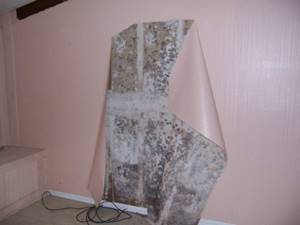
Coexistence with any organism is always fraught with danger for humans. Family people certainly know. However, the potential danger from fungus on the walls of an apartment is much more serious. If only for the fact that its harmful effects on the human body most often occur unnoticed - and often, even before a colony of microorganisms has settled in your apartment, their waste products enter through the respiratory tract and even food.
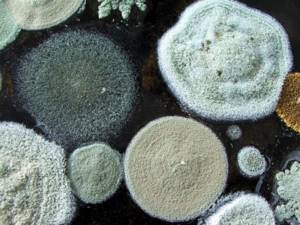
At the same time, the localization of the area of the apartment affected by the fungus does not play a role at all: literally in a day, a colony of microorganisms grows by one billion units - and they easily spread through the air throughout the entire area of the living space. Eventually:
- allergic attacks;
- dermatitis and other skin diseases;
- bronchial asthma;
- diseases of the gastrointestinal tract;
- affected lungs, tuberculosis.
